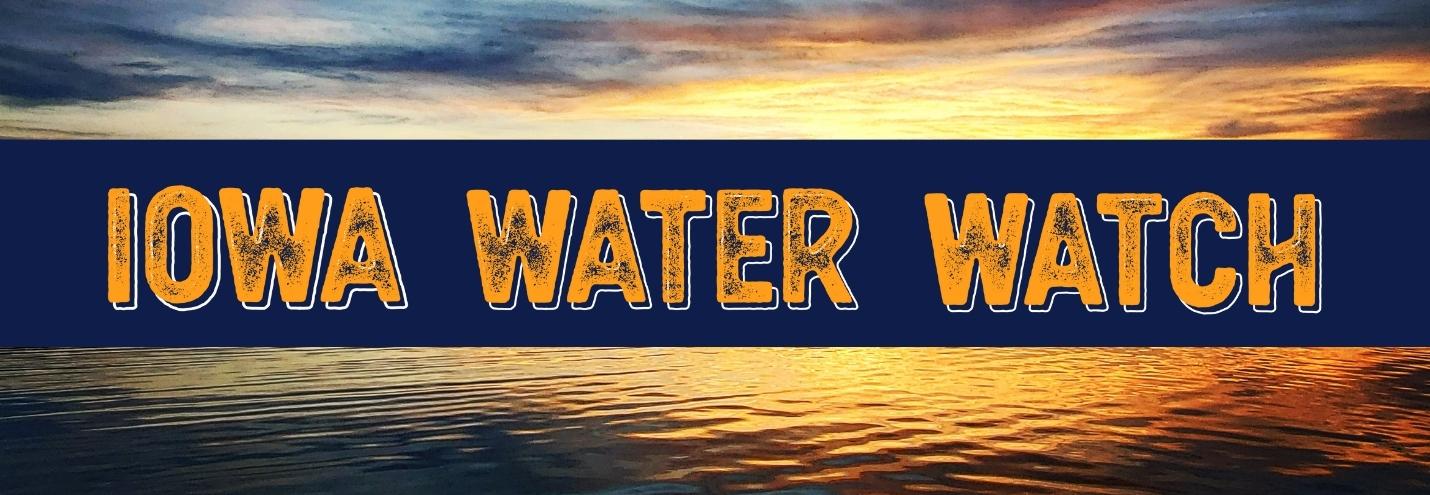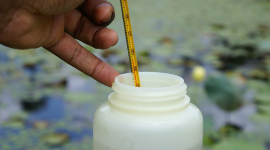|  | Lead Service Lines and Replacement Options in Iowa |
| As communities across Iowa begin identifying their local LSLs and accessing federal dollars, IEC's Communications & Advocacy Associate Sarah Howe dug into the legacy of lead service lines (LSLs) and looked at updated information and resources from the DNR and federal resources to help Iowans as they think about their infrastructure needs. What are lead service lines? Lead service lines (LSLs) and galvanized steel lead lines are pipes used to distribute water from a water utility. These types of pipelines were widely used prior to 1900 and well into the 20th century, although there was research even then to suggest that lead exposure had detrimental effects to human health. In the United States, LSLs were allowed, and often mandated, until the 1986 Safe Drinking Water Act Lead Ban. Lead is a known contaminant to drinking water, contributing to serious health and developmental problems in children and pregnant people. Exposure can cause developmental delays, damage to the nervous system, fertility issues, mental illnesses, and kidney failure. According to the CDC, "more than half of children in the U.S. are at risk of lead exposure – often in their own home." Lead service lines are the leading cause of lead exposure in drinking water to individuals in the U.S. A 2021 study found that 76% of Iowa children under the age of 6 had detectable lead levels in their blood. That proportion is the fourth highest in the nation. The CDC says there is no blood lead level that is safe for children, but the department uses a reference value of 3.5 micrograms per deciliter to identify children with elevated blood lead levels. This exposure poses serious, lasting risks to those affected. Read the full piece on our website at the link below. |
| |
|
| | Safe Drinking Water Act Petition to EPA IEC and coalition partners submitted a petition to the EPA on April 16, 2024, urging the EPA to exercise its emergency powers under the Safe Drinking Water Act to address groundwater contamination in Iowa’s Driftless region. The petition highlights nitrate concentrations above 10 milligrams per liter in drinking water, which is the federal limit established by the EPA, and documents that thousands of private well tests and some public water wells have regularly approached or exceeded that concentration for years. IEC Water Program Director Alicia Vasto and Staff Attorney Michael Schmidt hosted a webinar on May 1, 2024 to share background about the rulemaking process that led to filing this petition, what the petition calls for, and what we expect from the EPA moving forward. Learn more at iaenvironment.org/2024SDWAFactSheet. |
|
|
| |  | Spring Water Quality Monitoring Opportunities in Iowa Join volunteers across Iowa for a day of citizen science on May 21. The spring water monitoring snapshot is an event where volunteers sample water at many sites during the same period of time to provide a “snapshot” of the health of our waterways. People in Polk County can join Polk County Conservation’s teams of volunteers to collect water data at sites around the county. Registration is required. In Story County, join Prairie Rivers of Iowa to pick up a kit if you’re an experienced water tester, or meet their expert staff at 7:30 AM to learn how to use the water chemistry test kit. Learn more on their website. Across the state, volunteers can participate in any of Izaak Walton League’s monitoring programs to be part of the snapshot. Visit their website to get a Nitrate Watch or Salt Watch kit or start the Save Our Streams (SOS) online training. SOS volunteers can also borrow monitoring equipment from 13 sites across the state to conduct SOS monitoring. |
|
|
 | EPA Releases Per- and Polyfluoroalkyl Substances (PFAS) Rule Last month, the EPA finalized drinking water standards for five per- and polyfluoroalkyl substances – known as PFAS or "forever chemicals". While EPA’s previous health advisory level was 70 parts per trillion, the new enforceable standards are much lower, at 4 or 10 parts per trillion in public water systems, depending on the chemical. Public water utilities and distributers are granted three years to monitor their PFAS levels, and two additional years to make necessary infrastructure upgrades to reduce any compound that exceeds the new federal standard. Learn more in IEC’s updated factsheet. The Iowa DNR developed the PFAS Action Plan to protect the health of Iowa residents and the environment from PFAS. The agency tested public water supplies for PFAS from 2021-2022; they detected PFAS in 41% of finished water samples. Twelve water supplies will be affected by the EPA’s new rules. |
|
|
 | IEC Selected for EPA's Water Quality Subcommittee IEC’s Water Program Director Alicia Vasto has been selected to serve on the EPA’s new Animal Agriculture and Water Quality (AAWQ) subcommittee. The subcommittee was created following EPA's denial last year of two petitions seeking stronger rules for concentrated animal feeding operations (CAFOs). The petitions called on the EPA to adopt rules that would have required more CAFOs to obtain permits under the Clean Water Act. In EPA’s denial of the petitions, the agency committed to forming the AAWQ subcommittee. "I’m grateful for the opportunity to serve on the subcommittee and represent the voices of Iowans that want to stem the tide of manure pollution in our state," said Vasto in response to the announcement. "I hope that as a result of this process with AAWQ, EPA will improve oversight and enforcement of CAFOs.” Read more about the announcement in IEC's newsroom. |
|
|
| | | | | Upcoming water events:
• 2024 Watershed Talk - Virtual, 5/14
• Crappie Fishing at Rathbun - Centerville, 5/13 - 5/17
• Spring Into Action - Des Moines, 5/18
• Black Agriculture & Farming Series - Des Moines, 5/19
• Sustainability Fair - Urbandale, 5/23
• CLAMP: Volunteer Training - Dickinson Co., 5/29 - 5/30
• Redefining "Disadvantaged Communities" in a New Water Infrastructure Era - Virtual, 5/30
• Riversurf Clinic - Charles City, 5/31
• Wild Waters Paddle - Dallas Co., 6/1
• Great Iowa River Race - Iowa City, 6/8
• Resisting Colonization, Rematriating the Land and the World Around Us - Virtual, 6/13
• Presentation & Listening Session: Iowa's Safe Drinking Water Act Petition to EPA - Dubuque, 6/13 |
|
|
|  | | | Iowa Environmental Council
505 Fifth Ave., Suite 850
Des Moines, Iowa 50309-2317
515-244-1194 | iecmail@iaenvironment.org |
|
|
| Did a friend forward you this email?
Sign up to get IEC's Iowa Water Watch and other newsletters from the Iowa Environmental Council. |
|
|
|